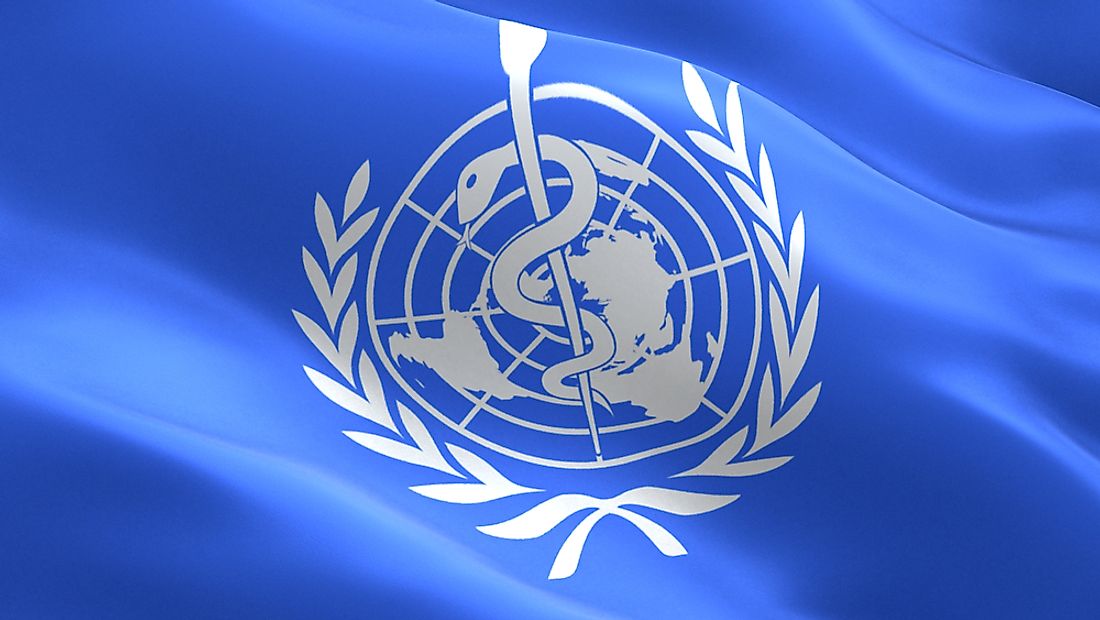What is The World Health Organization (WHO)?

I. Relevance of the WHO
The World Health Organization has a special holiday celebrated the world over on April 7, which serves as a testament to its successful leadership as a steward working for global health. It is also a day when people and nations take a single health issue and find ways to protect people from its health threats. The organization respects all individuals' freedoms, and also their governments' responsibilities to protect earth's citizens from health hazards and diseases by working to provide safe water and ensure clean air.
The World Health Organization's relevance continues into the 21st Century, with its hope and driven dedication being to promote and help people attain the highest possible level of health in the world today and into the future. The organization has defined its objectives under its constitution as being at the forefront of major international health-related initiatives. It also further states that, whenever and wherever health is threatened, it would be there to restore the people's well being.
The WHO is bent on providing leadership in accomplishing good health all over the globe, doing so in partnership and cooperation with other organizations in its duty to ensure the continued overall good health of all the world's people. Over time, the organization has come to know what avenues it has to take to continually be of service in improving the health of the global population. The objective of the organization for this, set forth in Millennium Development Goals (MDGs), is to act in cooperation with its member countries, and synchronize its actions with other concerned countries and agencies in the international health system.
II. History of the World Health Organization
The year 1851 saw the conceptualization of the idea ( and for a need) to establish a World Health Organization. However, this concept did not firmly take root until almost a century later, after the Second World War. Prior to the organization's formation, it's constitution was signed by 61 UN member countries on July 22,1946, establishing its headquarters in Geneva, Switzerland. The World Health Organization is under the World Health Assembly, and its yearly meetings take place in Geneva every May. Its Director General is appointed to a five-year term, and its executive board is composed of 34 members each serving on a three-year term. The current leader of the WHO is Director General Margaret Chan.
On April 7, 1948, the United Nations Development Group formalized the creation of the World Health Organization. The new organization then took under its wings two UN health agencies. Namely, these were the League of Nations Health Organization and the Office International d'Hygiene Publique. The WHO was created to take care of the world's health problems, and it has 194 member states that also belong to the United Nations. One of its first concerns was the eradication of small pox.
The organization also publishes the World Health Report, the Worldwide Health Survey, and World Health Day. These health reports were first published in 1995, and continue to give member countries updates on information that influences each country's funding and health policies. On a wider scope, the published data and information on health are also available to the public, including everyday citizens, journalists, research institutions, and universities alike. The topics and themes also vary for every issue, from health system financing for health care, to health security and mental health. Notably, one published research on those persons over 50 years old, in its “Study on Global Ageing and Adult Health”. The survey involved 50,000 people in 23 countries.
The World Health Organization also started an online database on people with mental disabilities, with the aim of eradicating human rights abuses toward this group of people. It is called MiNDbank (just as it is spelled), and it went live on the World Wide Web on Human Rights Day. The website and database contains varied information regarding human rights, mental disability, substance abuse, and other relevant topics. It also has information about the laws in many countries regarding policies, strategies, and service standards for people with these conditions.
Today, the WHO is a specialized agency concerned with finding ways to stop infectious diseases, such as Ebola, malaria, HIV/AIDS, and tuberculosis. Some of the successful programs run by the WHO were the inoculation drive for tuberculosis (1950), that for the eradication of malaria (1955), and the first global look at diabetes mellitus. The organization also spawned the International Agency for Research on Cancer in 1965. In 1979, the WHO declared the total eradication of small pox. Then, in 1998, infant survival increased and life expectancy increased, and was defined as such by the organization as well.
The WHO has other roles that include looking into the alleviation of non-communicable diseases, development and aging, food security, healthy eating, sexual and reproductive health, substance abuse, and occupational health. The 2015 budget for all of these concerns were funded by a $930 million USD contribution from its constituent member states. An additional $3 billion USD was also sourced from other donations from all over the world.
III. Main Functions of the WHO
The World Health Organization has made its purpose known from the first day of its creation. However, every year or so, its main agenda may see changes, adjusted accordingly to the transforming health needs of the world. Its many functions are a result of careful analyses of the organization's leadership roles on the international stage. That it always maintains a neutral stand, and honors its universal membership as well, are just as important as its well-known convening power. The Eleventh General Program of Work 2006-2015 defines the six main functions of the organization, and these are listed immediately below.
1. Acts as leader on matters important to health and cooperates with other countries.
2. Creates the research agenda and follows the generation, translation, and dissemination of important knowledge.
3. Creating norms and standards and implementing their promotion and monitoring as well.
4. Explaining ethical and evidence-based policy options.
5. Giving technical assistance, catalyzing change, and creating sustainable institutional capacity.
6. Watching over the health conditions and addressing the health trends.
Millennium Development Goals
In September of 2000, the United Nations' 191 member countries also set goals for 2015 under the banner of 'Millennium Development Goals'. These continuing goals are:
1. To stop poverty and famines.
2. To implement universal primary education.
3. To make gender equality a reality and give women responsibility.
4. To improve child survival.
5. To improve the mothers' health.
6. To fight malaria, HIV/AIDS, and other illnesses.
7. To help in protection of the environment.
8. To foster cooperation between countries in development.
There is no question that all 191 member countries support the Millennium Development Goals. The Association of Southeast Asian Nations (ASEAN) and the European Union (EU) have both reshaped their own respective policies and workings around the larger demands of the MDGs. The OXFAM and Red Cross are two other international charities that have focused their aims on helping to achieve the MDGs. There are many more civil society organizations that are in the international, regional, and local levels that have adopted these very same MDGs as well.
IV. Controversies & Setbacks
The World Health Organization is a United Nations agency that promotes and gives healthcare for people that need them around the world. It has made many achievements, and garnered accolades on the international scene. Still, especially lately, it has been criticized for financial mismanagement, as well as partisan politicking.
One of the major accusations that seems to be persistent is the issue relating to the appointments of those in key positions in the organization. Many feel that political patronage factors too much into the choice of these appointees. In 1993, the cause of criticism was vote buying in the election of its Director General, which is a crucial position inside the organization that would be responsible for guiding the WHOs objectives and policies into the next century. Thus, many member countries were concerned about the WHO's processes and integrity.
There have also been the failures to reach stated goals, such as the failures to eradicate Malaria, Cholera, Diarrhea, and Tuberculosis. These problematic areas have been subsequently addressed, though still seem to be major obstacles to hurdle yet. Tuberculosis has sprung back due to resistance caused by the overuse of antibiotics. The WHO then started a new TB plan to follow up the original initiative. Diarrhea also remains as killers of children and adults in most developing countries in the world today.
The many failures to achieve health goals in the past have been directed to the organization as being caused by its bureaucratic nature and internal politicking. History shows that, in the 10 years that Dr. Hiroshi Nakajima was Director General of the World Health Organization, he was accused both internally and externally of such mismanagement. Dr. Nakajima was accused of lacking in communication abilities, and further allegations pointed to his autocratic and bureaucratic behavior inside the organization. He was also accused as employing vote-buying techniques. Although he was re-elected to the post again, the initial confidence he enjoyed with many major Western countries rapidly went sour.
As disbelief and loss of confidence grew from the major donors, increasingly their donations failed to materialize as well. Many of the WHO's projects were under tight budget constraints, which ultimately led to the creation of another UN agency to handle an international AIDS program. The transfer began the deterioration of the WHO's role as a major leader in world health affairs, as other UN agencies were tasked to take similar roles thereafter as well. However, today the World Health Organization has taken on new challenges under new leadership for the 21st Century. Hopefully, it can regain confidence and remain on course in reaching it most important objective: ensuring and promoting better health for all.







